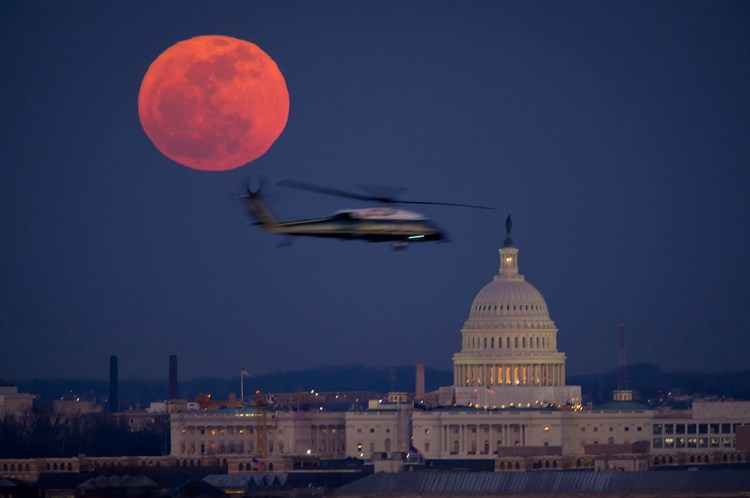The longest lunar eclipse of the 21st century is coming up, and you don’t want to miss it.
On Friday, the moon will be fully engulfed in the heart of Earth’s shadow for 1 hour, 42 minutes and 57 seconds.
It doesn’t get much better than that. The longest possible duration of a lunar eclipse is one hour and 47 minutes, according to EarthSky.org.
If you live in North America, you will not be able to see the marathon celestial event in person — unless you live in the far eastern part of Newfoundland. Unfortunately the event will be occurring during our daytime. But if you happen to be in eastern South America, Europe, Africa, the Middle East, Asia or Australia, you are in luck. The rest of us will just have to watch online.
Even though the Earth will be lined up directly between the moon and the sun, the moon will not be blacked out completely.
Instead, it will appear to be a deep copper red as it reflects the scattered light of all the sunsets and sunrises on Earth back at us.
If you were standing on the moon at the time of the eclipse, the Earth would look like a black disk outlined in glowing red. That’s because some light from the sun bends around the edge of the Earth where the blue and green wavelengths are scattered by our atmosphere.
There are a few reasons that Friday night’s eclipse will last so long.
Every time there is an eclipse, the moon passes through the Earth’s shadow, but it doesn’t always pass through the same part of the shadow.
As you would expect, the shadow of the Earth looks like a disk. Sometimes the moon passes through the top of the disk, or toward the bottom. During this week’s lunar eclipse, however, the moon will pass close to middle of the disk.
“The Moon is passing very close to the center of Earth’s shadow, so it is passing on a chord that almost equals the full diameter of the shadow,” said Steve Edberg, a recently retired astronomer at the Jet Propulsion Laboratory in La Canada-Flintridge. “In other words, the moon is taking almost the longest possible path through Earth’s shadow.”
In addition, the Earth is closer to the Sun during the northern hemisphere summer so its shadow is larger than average, he said.
And finally — the Moon is near apogee (the most distant point in its orbit) around the July full moon, Edberg said. So it is moving slower in its orbit and taking more time in the shadow.
Friday night’s lunar eclipse will be more than 20 minutes longer than the last one, which occurred earlier this year on Jan. 31. That one lasted for one hour and 16 minutes, according to NASA.
The next one, which is coming up on Jan. 21, 2019, will be 1 hour and 2 minutes.
The shortest eclipse of the century occurred just three years ago on April 4, 2015. It lasted for 4 minutes and 43 seconds.
Even if you can’t see Friday night’s eclipse in real life, you can watch it on your computer. The website timeanddate.com will be livestreaming the eclipse beginning at 2 p.m. EDT Friday. The partial eclipse will begin at 2:24 P.m. — that’s when the Earth’s shadow will begin to creep across the moon. The full eclipse starts at 3:30 p.m. EDT and ends at 5:13.
If you don’t want to tune in for the whole show, I suggest watching just before 3:30. That way you can see the moon move full into the Earth’s shadow. It will give you a sense of the clockwork of our solar system.
And last but not least: Mars just happens to be in opposition on Friday night as well. That means it will be shining extra-bright in the night’s sky.
A red planet glowing next to a red moon — it should be a beautiful show.
Send questions/comments to the editors.



Success. Please wait for the page to reload. If the page does not reload within 5 seconds, please refresh the page.
Enter your email and password to access comments.
Hi, to comment on stories you must . This profile is in addition to your subscription and website login.
Already have a commenting profile? .
Invalid username/password.
Please check your email to confirm and complete your registration.
Only subscribers are eligible to post comments. Please subscribe or login first for digital access. Here’s why.
Use the form below to reset your password. When you've submitted your account email, we will send an email with a reset code.